A few weeks ago I was surprised to find a message in my Facebook inbox from Jim Stiles asking me if I would be willing to contribute to the Zephyr. My initial reaction was to laugh. While I do not read it as often as I did 20 years ago when it was a paper I could stuff in my grocery bag, The Zephyr is a paper I have always enjoyed reading. The Zephyr was an essential monthly supply when I was a caretaker living 30 miles from town with no electricity or telephone – if the articles weren’t interesting enough to read 5 times, the cartoon ads were always worth more than one close look. Me, write for The Zephyr, that was a laughable thought.
I asked my husband, Ray, what he thought about this. Ray’s first reaction was “wow, you’d better have a pen name!!” That got me thinking, and then little nervous.
I now have lived in Moab longer than I have lived anywhere in my life. I call it home. I own a business here. I try to stay informed about the events and people in and out of town that impact us. But I don’t get out much, so my world is largely influenced by growing plants, the river, hiking with my dog, conversations with friends, and reading news when I can stomach it.
My opinion doesn’t matter more than anyone else’s. I expect I will write things people I know and respect may disagree with, possibly strongly. Hopefully it will be different people each time. Hopefully I can write with clarity and not offend people who I know, have worked with, and certainly who I respect. I hope that by putting my opinions out there I will think and learn more as well.
One thing I have noticed in common with everyone who stays in Moab – native born or exotic transplant – we all love it here. For different reasons, sure, but we all love the red rocks, the river, the mountains, and the community.
* * *
FINDING HOUSING IN MOAB – 1994 and 2014: IT GETS HARDER EVERY YEAR
Have you looked for a place to live in Moab lately? I have been noticing lots of posts on social media looking for a place to rent. It seems rentals are in short supply. If you need rent under $1000 it looks nearly impossible to find one.
This is not a new problem. Moab has never had a plethora of housing options. For various reasons there are few apartments here. Moab housing construction, as in many rural areas, exemplifies the “American Dream” of single family detached housing with space between houses.
Developments in Moab match national patterns and trends. In several courses in college we walked through neighborhoods in surrounding cities learning how the exterior layout of the homes and buildings told when the neighborhood was built; detached garages came in the 50s or were added on later, attached garages in the late 70s and 80s; house sizes in the 1930s were much smaller than in later decades; front porches came and went and are sort of back again. Back alleys at one time were the norm.
I moved to Moab in 1993. Few homes had garages, or if they had them they were add ons, usually car ports. It didn’t dawn on me then, but it does now, that nearly no homes were built here in the 1970s and 80s. As I have grown to understand Moab’s history this makes sense. No one had any money here to build anything at that time – people were leaving, not moving here.
Moab has changed a lot since then.
When I first arrived here I often heard “we don’t want be like Aspen”. Well, Moab, we have become….a while ago, actually.
I spent a number of years on the Moab City Planning Commission, before Moab had a Burger King, or an Arby’s or Taco Bell (which are now gone). I was appointed when City Hall was a small collection of offices around a few windowless rooms where the Council met. USU Moab now uses that space. Affordable housing was a hot topic then – and I remember talking at length about what we could do about it. In the end, a decision was made by not making one.
I don’t remember many of the details of those conversations. What I do remember was the feeling of helplessness. The feeling that this problem is bigger than us. The feeling that nothing we could do would help.
And in a democratic capitalist society where the Market is considered the great leveler perhaps there really wasn’t much we could do.
Housing is a tough issue for local government to influence – especially ensuring there is affordable housing. Many people see local government’s role as providing for public safety and health. This usually is interpreted to mean infrastructure: things like roads and streets, water and sewer systems. Housing is perceived as the job of the private sector to provide and to build. In this view, government’s only role in housing is providing necessary infrastructure, and drafting and adopting planning and zoning requirements to assure development of homes or commercial business do not impact the safety or well-being of citizens. I am not so sure that this is the whole role of local government.
IT ISN’T JUST MOAB…..
A recent article in The Atlantic (Rural America’s Silent Housing Crisis, Jan 28, 2015. Gillian B White) highlights that a lack of affordable housing is a nationwide problem that is particularly challenging in rural communities.
Only 1/5 of the population of the US population lives in rural areas, which means programs that assist with housing often skip over these areas since there is little political fat to gain. According to the article in The Atlantic, “funds for rural housing provided by the USDA via the 502 Direct Loan program — one of the government-aid programs for purchasing or rehabilitating homes in rural areas…— have decreased over the past few years.” From 2010 to 2013, funds allocated for the direct loan program have reduced by over half (and it was a tiny program to begin with.) Keep in mind, this fund is a low interest loan fund. Loans are given to individuals and families who may not be able to get a traditional bank loan. This is not a handout – this is a hand up. This kind of hand up is vital in a community with minimal apartment and rental housing stock, and lots of low paying jobs. And this program is all but dead.
The Market has not taken care of it; not in Moab and apparently not anywhere else. According to the City of Moab Affordable Housing Plan, in 2000 the gap between units available at affordable rents and demand was about 50. Fifty units seemed doable to build; a couple of apartment complexes could eliminate that gap. Allowing mother-in-law units on large lots in certain zones could have helped. Increasing densities in residential zones that are close to downtown could have meant that small infill could have begun to meet that need. We talked about these things, but none of those things were done. At planning commission meetings, and subsequent city council meetings, any efforts to change densities were met with protests of “we’ll lose our rural character.” Well, it’s ten years later and we lost it anyways. And I, for one, wish the loss had gone to houses for residents rather than only temporary housing for visitors.
In 2009 the gap between rentals needed and rentals on hand was projected to top 224 by 2012. I suspect it is even wider today. The Market is not taking care of the problem.
IT ISN’T FOR LACK OF BUILDING….
Ironically, over the last 15 years Moab has had a housing boom of sorts. I know, I made a living from designing and installing landscapes for some of them. Some of the intricate and larger landscape installations cost more than it would to purchase a modest house. Many of these homes, while they vary in size and location, have something in common. They are empty much of the year.
The Market builds this way because it makes money – and makes it relatively quickly with few strings attached. No tenants to deal with, no maintenance complaints, no damage to fix, no cleaning up after pets. With housing stock that was marginal in 1990 and most new construction being houses selling for $300,000 or much more, not much is available for those who live here making under $15 an hour. Even if Moab’s economy diversifies to include higher paying job opportunities, the hospitality industry is here to stay. There will always be a high demand for workers in positions that are not high paying. And there are not enough teenagers in this town to fill all those positions.
In my opinion, part of local government’s job is to ensure that we have affordable, moderate housing available in quantities that allow a workforce to live here. A workforce that, at least a portion of which, likely will be earning a modest wage. A clean healthy home (rented or owned, small or large) is a foundation for safe and healthy residents; residents who make up a safe and healthy community.
The Moab community has complied with a 1996 Utah State law mandating that we have an affordable housing plan “that addresses the current need for affordable housing, as well as needs looking at least five years into the future”. And it is a pretty good one. But a plan does not build affordable houses. A plan for affordable housing has action steps that encourage the Market to build housing that is affordable. Unfortunately we, as a community, have not taken action based on that plan.
Just because the Market thinks Moab needs more hotels doesn’t mean that we do. And the City and County could, as suggested in the Affordable Housing Plan, modify rules so that there are incentives for building moderate housing so that those projects could actually cover costs and be sold or rented for lower prices. Perhaps this is socialism, but I consider it taking care of your neighbors and community. There are limited large parcels of land in town where town homes, co-housing or apartments could be built. Should all these parcels become hotels or could these places house workers who keep those hotels, and other businesses, in business? The City or County cannot mandate that apartments, townhomes, co-housing or some other affordable housing options are built. But they could take a look at modest density increases, at impact fees, and at other incentives that might help those who may have a parcel of land that they are thinking of developing decide to build modest, affordable units rather than nightly rentals.
CENTRAL BUSINESS DISTRICT RESIDENTIAL DILEMMA
An example of this is the zone where I live. I tell this story because I know it to be true, not to bash the City or any individuals who work there. I tell this story because it illuminates some rules to consider changing. I do not know exactly how to change them for the better, to figure that out needs more conversation and creative thinking. But there definitely are things that can be done.
My house sits in the C-3, or central business district. It started as a one room home that was moved to this location in 1908 and was the home of Moab’s first doctor. Eventually two more rooms were built – a bedroom and a kitchen of sorts. At one time, during the uranium boom, my understanding is that the entire block around my house was trailers. Our shed out back was built as a shower house for the trailer park. My office used to be a chicken coop that was expanded into a small house. There were trailers in the front yard. The last of these trailers is still out back.
When the City defined zones, the C-3 became the central business district. Our home, and quite a few others, were in this zone at the time. Per City Code the C-3 is “a district in which the primary use of the land is for business purposes. The area covered by this zone is now and it is intended that it shall continue to be the dominant shopping and financial center of the city and surrounding territory…” A list of permitted uses follows this definition, and includes the following: “Dwellings and apartment houses are permitted on the ground floor only when constructed in conjunction with, and as an accessory to, a commercial use.” By definition and permitted uses, nightly rentals are fine, but in the center of town it is illegal to live on the ground floor.
This made sense once upon a time. At the time the City decided it would not levy property taxes, but rather would rely solely on sales taxes for revenue to run the city, it made sense to designate an area to focus this kind of development over all others. This revenue was needed to cover water distribution, sewer conveyance, streets, a police force, and other necessary governance. It was meant to encourage a shop front below with a residence above, or buildings that were solely commercial in use.
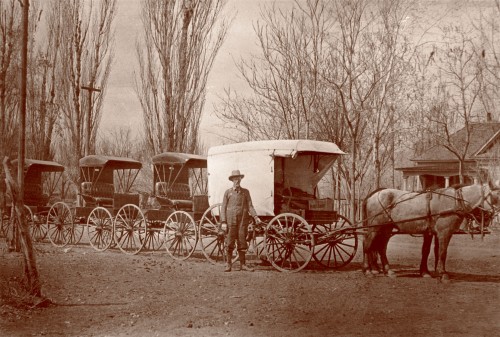
Doc Williams and his team of horses hauling Studebaker buggies down from the train stop near Thompson or Crescent with the house just barely visible behind the horses and all the trees!
In 2007, when my husband and I began to remodel our home, a home that has been in his family since 1908, we found that we could not get a building permit. We could continue to live in the house with no insulation, cracked windows, a roof that needed replacing, and floors with holes. The City wouldn’t kick us out of our house as long as we continued to use it as a permanent residence as the use was “grandfathered”. But non-conforming uses (the policy term for “grandfathered uses”) are merely tolerated, not permitted. So when a land owner wants to improve, add on, or renovate their home (which includes re-roofing it) in the C-3 zone in Moab City, they cannot get a permit to do so. When I realized our situation I spent a day walking the C-3 and counting ground floor dwellings within the zone. I counted around 100 that cold November day. There are fewer now.
My education is in city planning and landscape design. I understand zoning. I was on planning commission at the time we started our renovation. Yet somehow it never sunk in that a house that had been there pretty much since Moab has been a city (probably before it officially was a city) could not be renovated and stay our home. I suddenly understood better why the old homes in the downtown were all slowly falling apart and vanishing. Not only was I impacted by this, this seemed a real disservice to the City as a whole. So my husband and I set about to change that, in a limited way. We worked with City Planning staff on a code addition to allow homes to be declared historic by the City. Then those owners of homes in the C-3 could be granted building permits to repair and renovate them as permanent residences. These old homes in the C-3 are not only moderate homes (most small) but they are affordable homes. And they are a visible part of Moab’s history that is slowly vanishing, or turning into more nightly accommodation.
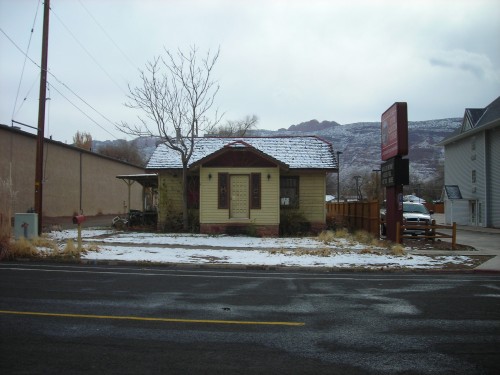
Example #1 of a home in the Central Business District that could be repaired to provide affordable housing for years to come. Photo by Kara Dohrenwend.
This is how zoning works. And changes and additions to City Code need to be a slow and deliberate process. There are good reasons for that. In my opinion, however, it is important for a city or county to periodically revisit zone definitions and rules – and make changes where these definitions and code restrictions may no longer serve the community well. To make sure that growth has proceeded in the orderly way intended, that it has proceeded in a manner that does not threaten the health and safety of its citizens, and change definitions to meet the new challenges that a growing and changing place faces. I realize zones can’t change frequently, otherwise land owners have no security. However, keeping a zone defined with the same language as when it was written over 50 years ago, long before the advent of tourism as an industry base, long before hotels outnumbered apartments, is perhaps not in the best service to the community.
NOW IS NOT THEN
Planning is not hanging onto what was; planning should examine where we are, consider what we have become, and think about what we may likely turn into. The C-3 prohibition on ground floor residences is merely one example of possible code modifications that might nudge the development of affordable housing units in a positive direction. The minimum house size in the Grand County Code is another example of this, and there are others. These are not quick fixes, and they require time and effort. Time and effort that is hard to find with high priced projects with paid designers and engineers demanding fast turn-around on permit approvals coming into planning offices at a steady clip.
While it is politically risky to change, the City and County owe it to their citizens to critically look at whether we as a community are meeting the needs for health and safety of our residents. In my opinion, the health and safety of our residents includes having enough housing that residents can afford. After all, the tourist dollars that fund Moab City will dry up if service declines because good hard workers can’t afford a clean, stable place to live. I don’t see the owners of many the new homes built in the past 15 years taking jobs as housekeepers, bussers, servers or retail staff.
We’re coming up short for the people born and raised here. We are coming up short for the people who moved here to live and work in this beautiful place because they love the place. We are coming up short for the people who are here now, who found their way here by birth, who found their way here by river, on foot or by highway, people who are here for whatever reason wanting to stay and be a part of this community and who don’t have a pension or a 401K. We need to decide what it is we want to be – a town and community who invite the world to come play in our back yard? Or a bedroom vacation community where everyone travels 120 miles to get what they need and there is a constant stream of Fed Ex and UPS trucks bringing in items ordered online?
It is time to take some intentional action before the lack of action results in another unconscious decision with consequences that we don’t want to live with.
Kara Dohrenwend is now a regular contributor to the Zephyr. She lives in Moab, Utah.
To read the PDF version of this article, click here and here.
To comment, scroll to the bottom of the page.
Don’t forget the Zephyr ads! All links are hot!


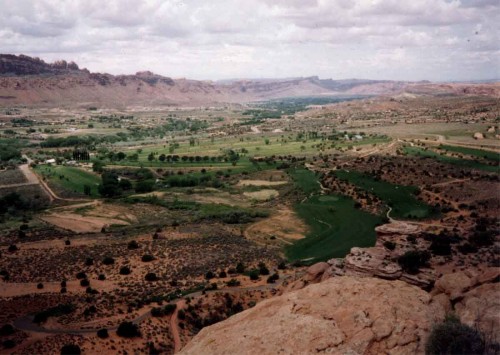

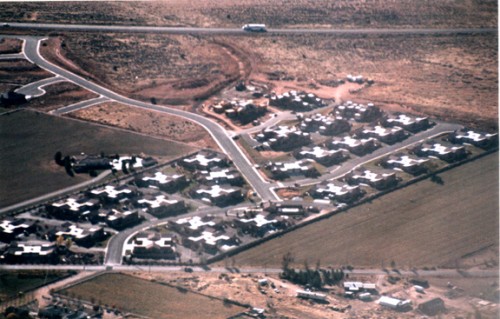


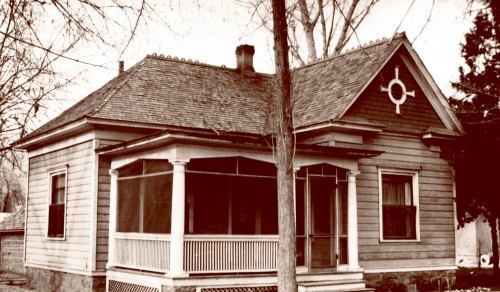
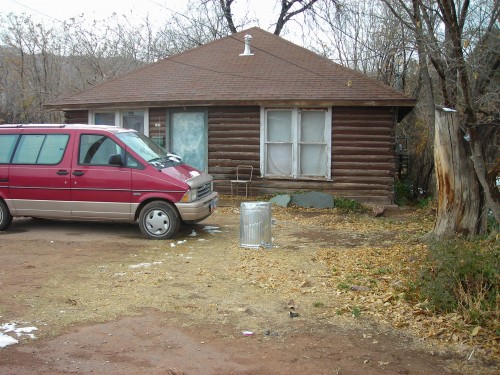
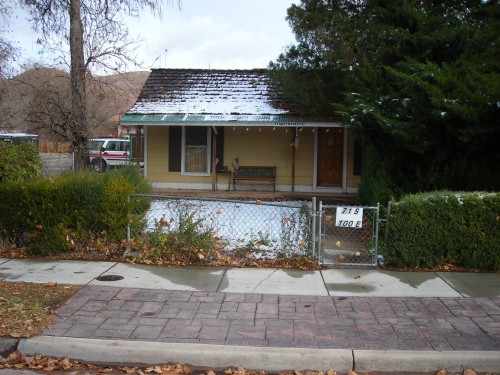

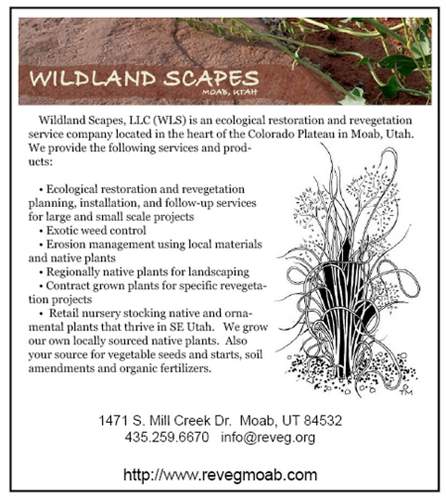

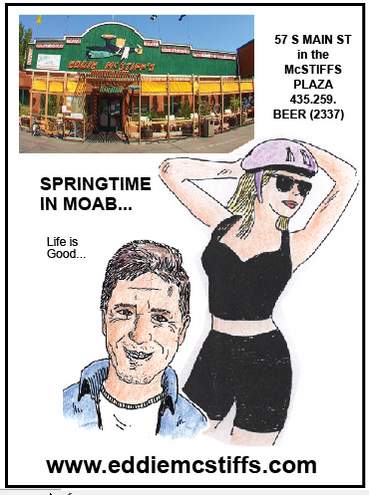
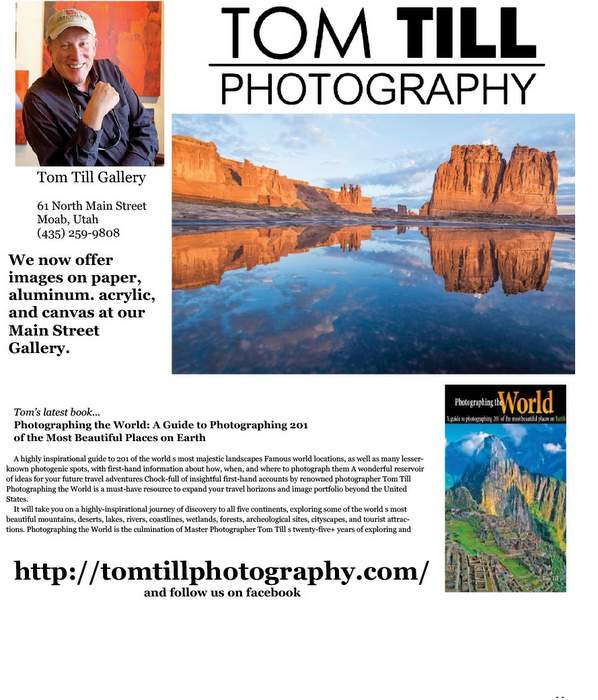

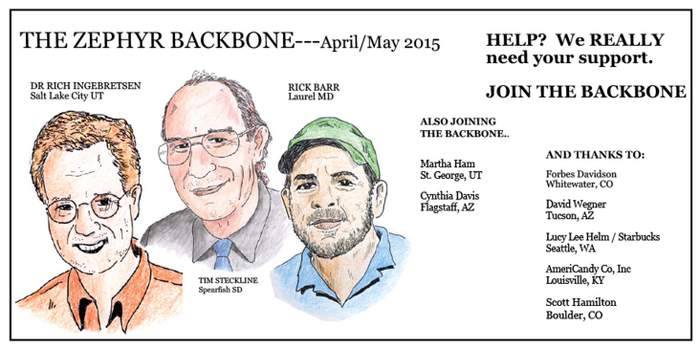
Well done Kara. I look forward to future articles from you in the Zephyr. Thanks for jumping into the fray! Although I think most will agree with your point of view on this topic.
Very nice article and well thought out! I am on the County Planning commission and we search for solutions at almost every meeting. I am looking at Tiny Homes/Tumbleweed cottages with deed restrictions against nightly rentals; and impact fee relief..slowly making headway. I am open to any and all ideas, EXCEPT linkage fees. We are estimating a housing gap of over 500 housing units. So were are they living? They are sharing housing, vans, campers etc! This is a real problem and as mentioned in the article: it is steadily getting worse.
Thank you writing on this topic Kara. Perhaps you would consider joining the Interlocal Housing Task Force, which meets next on April 27 at 10am in City Hall? I took up coordination of this group after signing on as the Grand County Planning Director. The group was stagnant for many, many months, but at the first meeting I facilitated last month the energy was high and there appeared to be a renewed commitment to action. As you noted, Grand County is in the midst of a housing crisis, and we need to be bold if we are to adequately address the lack of balance between supply, demand, and price…not to mention, quality.
I would like to make one small correction: Grand County does not have a minimum house size regulation. The County does, however, have minimum lot sizes, maximum building footprint ratios, street design guidelines, and setbacks, all of which influence land use more than building size. These requirements, among others, determine infill density potential and need to be addressed if we are to increase the supply of affordable housing. On the other hand, density does not necessarily lead to affordability – there is more nuance to the conversation, such as inclusionary zoning (requiring large developers also create affordable units), deed restrictions (i.e. income requirements, employment status w/i Grand County), renovation vs. new construction, etc.
You hit the nail on the head: in what kind of community do we want to inhabit! That, by necessity, is a public conversation. Thanks to you and the Zephyr for opening up the forum.
I’m standing up and clapping after reading your article. It was excellent. My family moved to Moab in 1954. The sausage ad states it well. Made by Locals, for Locals…and everyone else too. You are right, it is time for us to decide what kind of town we want to be. I dream of returning to Moab to live but wonder if it will ever be possible. Thank You for writing.
Thanks Zacharia, for the comment and the invite. Unfortunately I am not in a position to take on any new responsibilities at the moment and cannot commit to the Interlocal Housing Task Force at this time. Also, mid week daytime meetings are a little tough for me to fit into my current workschedule. I am sure there are others who can provide better insight and enthusiasm than I can at the moment.
I was unaware that there was not a minimum home size in the county, I know there used to be. I can’t recall if it is a part of the uniform building code perhaps? I do recall that topic as part of our discussions over 10 years ago – but perhaps that has changed! That is a great thing. Small rather than large homes is important.
And you are right – density does not inherently beget affordable housing. However, without higher densities affordable and moderate cost housing is an impossibility.
Yes – this needs to be a public conversation. It needs lots of thoughtful people who want Moab to be for Moab residents as well as visitors, not just for visitors. I hope that this conversation continues and grows – the more people there are searching for a solution to this problem gives me a lot of hope.
Ironically, it was government intervention into the housing market, via easy-to-get mortgages, that created a lot of the problems to begin with. That cheap supply of money increased the number of so-called qualified buyers, and hence- demand- and that helps keep prices high.
So yes, the free market generally works pretty good. But the government has already messed things up so badly that the free market isn’t allowed to operate as freely as most people would lead you to believe.